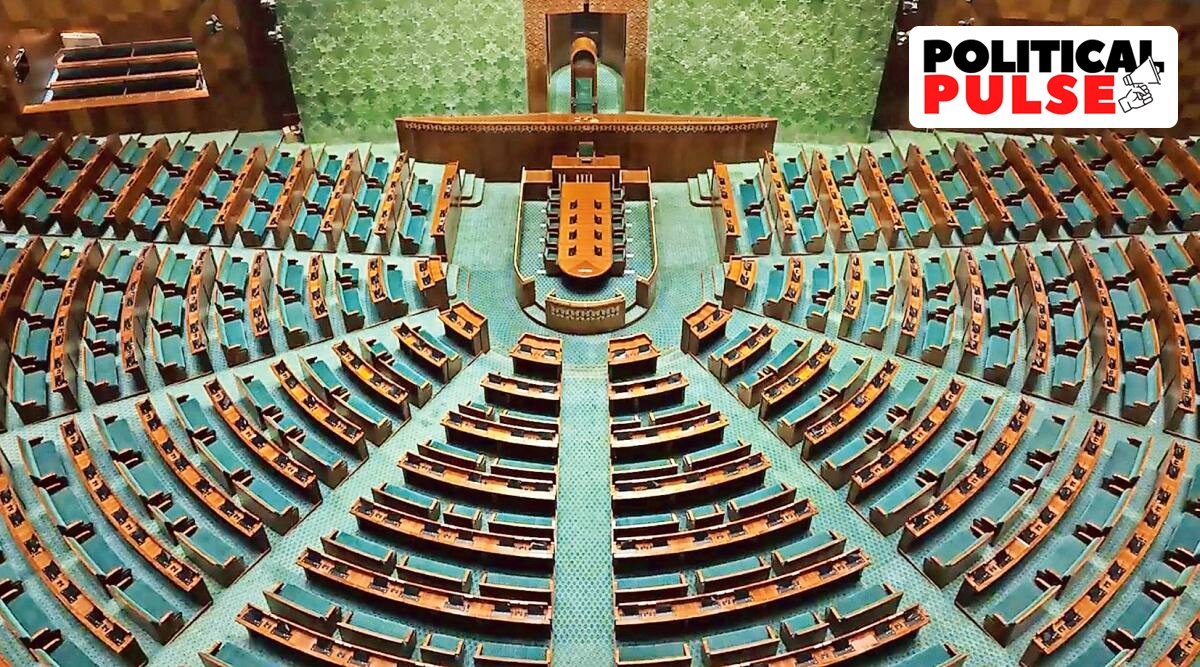The Bill on 33% reservation for women in Lok Sabha and state Assemblies enters Rajya Sabha Thursday and is set to sail through given how different the Upper House is 13 years on.
For one, the SP, one of the architects of the opposition to the Bill in 2010, has changed its stand.

In Lok Sabha Wednesday, the SP and BSP supported the Constitutional amendment Bill, though with caveats.
“We voted for the Bill, but with queries. We wanted an OBC quota, a minority quota and immediate implementation of women’s reservation,” S T Hasan, SP Lok Sabha MP, told The Indian Express. “Women of the country will take the government to task for delaying the quota.”
But 13 years ago, when Rajya Sabha passed a similar Bill, the scene was different.
SP MPs Nandkishore Yadav and Kamal Akhtar had climbed atop the table of Chairman Hamid Ansari, and Yadav even uprooted a microphone. They were suspended, along with party MP Veerpal Singh Yadav.
On Thursday, SP MP Ram Gopal Yadav is likely to tweak the 2010 stand of opposition to the Bill by supporting it with caveats.
While much of the Rajya Sabha has changed since then, some MPs – including Abhishek Manu Singhvi, Rajeev Shukla, Prakash Javadekar, G K Vasan, Birendra Prasad Baishya, Bhubaneshwar Kalita, Purushottam Rupala and Ram Gopal Yadav – remain members of the Upper House.
The BJP had supported the Bill at that time, and the late Arun Jaitley had led his party in the debate. Passionately supporting the Bill, Jaitley had said that he had a sense while coming to the House that he would, on that day, be party to the making of history.
Jayanthi Natarajan had spoken in favour of the Bill on behalf of the Congress and Brinda Karat had backed it as member of the CPM.
Although the then Union Law and Justice Minister Veerappa Moily had said that it would be difficult to have a sub-quota for OBCs within the Bill – given the fact that there was no data on OBC population in the absence of a caste census since 1931 – the Congress has now tweaked its stand.
Congress president Mallikarjuna Kharge in Rajya Sabha, and Sonia Gandhi and Rahul Gandhi in Lok Sabha, are batting for an OBC quota within the women’s quota while supporting the Bill.
In 2010, the passage of the Bill saw tension and disruptions in Rajya Sabha. Then BJP MP Balbir Punj told The Indian Express, “I remember that an RJD MP broke a glass tumbler and there was tension for some minutes… about half a dozen Marshalls had to physically carry him out. Chairman Hamid Ansari was standing for a few minutes.” Seven MPs from SP, RJD and LJP were removed from the House on that day.
Shivanand Tiwari, who was JD (U) MP in 2010, recalls having supported the Bill in Rajya Sabha.
“In our party, Chief Minister Nitish Kumar supported the Bill while Sharad Yadav, senior and respected leader, was a known opponent of it. So, MPs were confused. In a party meeting before the vote, I suggested that senior leader Ram Sundar Das should bring about reconciliation between the two leaders, failing which the party should support the Bill. Sharad Ji was present and kept quiet. So, since no resolution took place, we supported the Bill.”
Following passage of the Bill in the Upper House, Sushma Swaraj, Brinda Karat and Najma Heptullah were photographed hugging each other in delight.
Lalu Prasad, Mulayam Singh Yadav and Sharad Yadav held an impromptu press conference before Mahatma Gandhi’s statue outside the old Parliament building, where MPs often protested, and expressed serious reservations about OBC women not benefitting from the Bill.
The Rajya Sabha composition has changed drastically since then. The Congress was the single-largest party in the Upper House in 2010, with 71 members.
The BJP was far behind, with 44 seats in 2008 that climbed to 51 by the end of 2010. Today, the BJP is the largest party in the Upper House, with 94 members, and the Congress is down to 30.
The Trinamool Congress had just two Rajya Sabha MPs in 2010 but now has 13. The AAP, which didn’t exist in 2010, has 10 MPs in Rajya Sabha.
The BSP, which had 12 Rajya Sabha MPs in 2008, and 18 by the end of 2010, has no Rajya Sabha MP today. The YSRCP, which too didn’t exist then, now has nine MPs in the Upper House.
The CPM had 15 MPs in 2008 – the number fell marginally to 13 by the end of 2010 – has just five now.
Most Read 1Chandrayaan-3 mission: Dawn breaks on Moon, all eyes on lander, rover to wake up 2As Indo-Canadian relations sour, anxiety grips Indian students, residents who wish to settle in Canada 3Karan Johar says Sanjay Leela Bhansali did not call him after Rocky Aur Rani: ‘He’s never called me but…’ 4Shubh’s tour in India cancelled: Why is the Canada-based singer facing the music? 5Jawan box office collection day 13: Shah Rukh Khan film to pass Rs 900 crore globally, just days away from overtaking Pathaan
The BRS, which rose in Telangana on the back of the statehood demand, has seven MPs today, but was not present in 2010.
There is only a marginal difference in the presence of parties like DMK, JD (U), BJD and RJD between then and now.
Also ReadChill in Nitish, INDIA ties grows: Boycott of TV anchors to coordination …Boost for women empowerment, says PM Congress never made OBC PM, BJP did:…Siddaramaiah-Shivakumar rivalry continues to simmer in Karnataka as proxi…India-Canada diplomatic row: BJP and Congress slam Justin Trudeau, Akalis…
Still woefully low, the representation of women in Rajya Sabha has risen marginally. Today, women constitute 13.02 per cent of the Upper House strength. Between 2008 and 2010, the percentage varied from 9.79 per cent to 11.15 per cent.
© The Indian Express (P) Ltd


